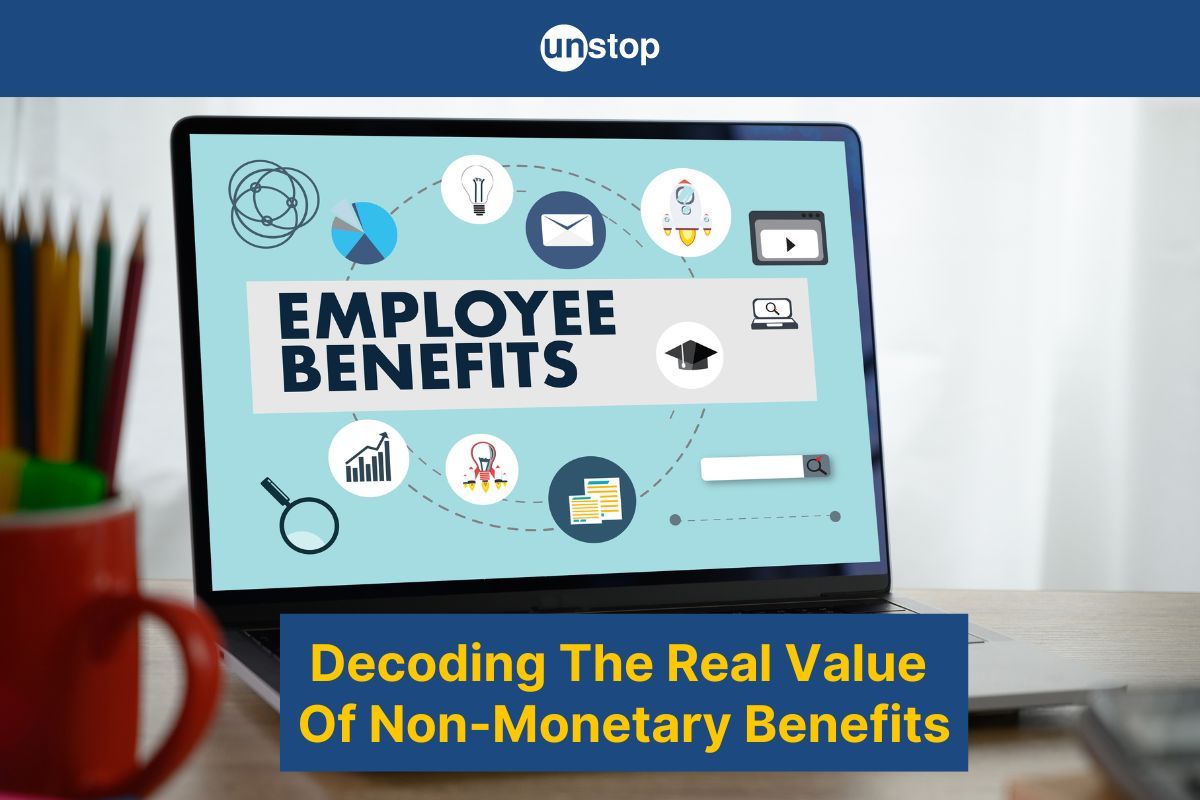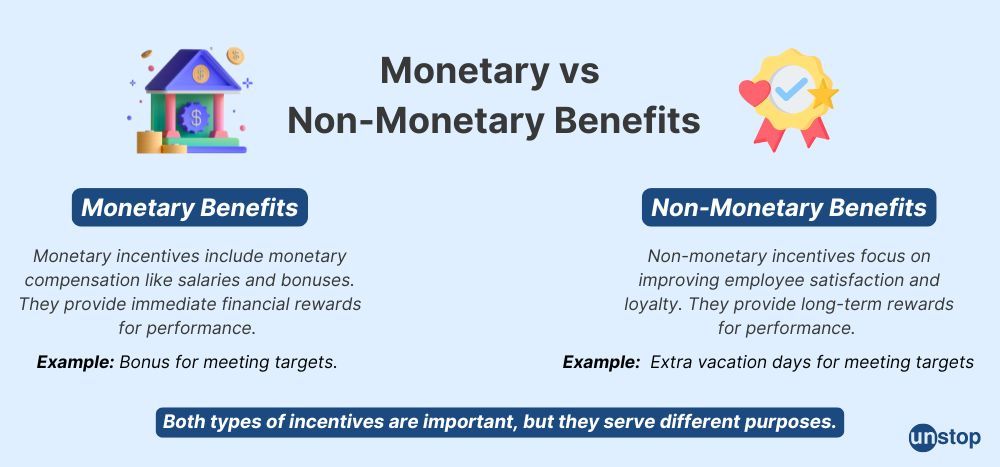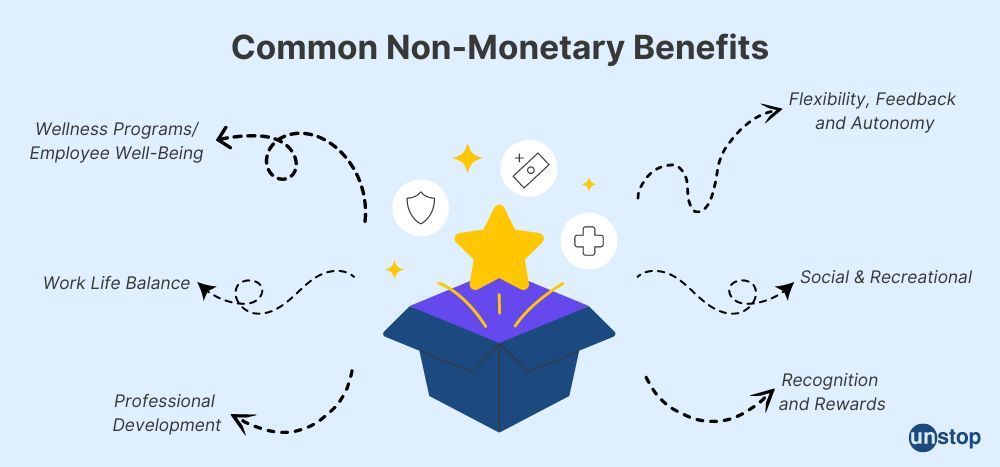- Understanding Non-Monetary Benefits
- Significance in the Workplace
- Designing Successful Programs
- Effective Incentives List
- Final Remarks
- Frequently Asked Questions
Non-Monetary Benefits: 15+ Incentives To Boost Employee Engagement

What if you could boost employee satisfaction without spending a dime? Non-monetary benefits are the secret sauce to creating a happy and productive workplace. These perks go beyond salary, offering valuable advantages like flexible hours, remote work options, and professional development opportunities.
Companies that embrace non-monetary benefits often see improved morale and loyalty among their teams. Employees appreciate recognition, work-life balance, and a supportive culture just as much as they value their paycheck.
By focusing on these aspects, businesses can attract top talent and retain their best workers without breaking the bank. Discover how to implement these strategies for a thriving workplace.
Understanding Non-Monetary Benefits
Definition
Non-monetary benefits refer to intangible rewards that organizations offer to employees. These benefits do not involve direct cash payments or financial compensation. Instead, they focus on enhancing job satisfaction and workplace morale. Examples include recognition programs, flexible work hours, and professional development opportunities.

Employees often find these rewards valuable, and they contribute significantly to employee engagement. When workers feel appreciated beyond salary, their motivation increases. This can lead to better performance and lower turnover rates. For instance, a company might implement an "Employee of the Month" program. This approach recognizes individual contributions and fosters friendly competition among peers.
Important: Non-monetary benefits, like training, sponsoring conferences for employees, etc., still involve costs for the company. However, they do not directly provide monetary compensation to employees. Instead, they offer valuable opportunities for professional development and networking, which can indirectly contribute to employee satisfaction and retention.
Examples in Organizations
Many companies utilize non-monetary benefits to attract and retain talent. Let’s take a look at some popular examples:
- Google offers its employees various perks such as free meals, fitness classes, and nap pods. These benefits create a positive workplace environment that fosters creativity and productivity.
- Microsoft provides opportunities for continuous learning through workshops and courses. This approach helps employees grow professionally while feeling valued.
- Salesforce promotes a strong culture of recognition through its "Ohana Culture". Employees celebrate each other's achievements regularly, creating a supportive environment.
- Zappos focuses on employee happiness through unique perks like "fun days". These events encourage team bonding and creativity beyond daily tasks.
- Starbucks provides benefits like stock options and free coffee for employees. These perks create a sense of ownership and loyalty among staff members.
Non-monetary benefits play a crucial role in an employee's overall experience at work. They can lead to increased job satisfaction, which translates into higher productivity levels. Companies that invest in these benefits often see improved employee retention rates.

Significance in the Workplace
Workplace Culture
Non-monetary benefits play a crucial role in enhancing workplace culture. These benefits include flexible work hours, recognition programs, and opportunities for professional development. Such perks create a positive environment where employees feel valued and supported.
A strong workplace culture attracts better talent. Companies with good cultures often stand out as desirable places to work. Employees are also more likely to stay when they feel connected to their organization's values. This connection fosters loyalty and reduces turnover rates.
Employee Satisfaction
Non-monetary incentives significantly contribute to employee satisfaction. When employees receive recognition for their efforts and autonomy in their roles, they feel appreciated, which improves morale, motivation and, consequently, productivity.
Research also shows that organizations offering non-monetary benefits see higher levels of job satisfaction. For example, companies that provide training opportunities report greater employee engagement.
Team Dynamics
The impact of non-monetary incentives on team dynamics is profound. These benefits encourage collaboration among team members. When employees work together towards common goals, they build trust and camaraderie.
Supportive environments lead to better communication within teams. Teams that communicate well can resolve conflicts quickly and effectively. This improves overall productivity and enhances the quality of work.
Moreover, non-monetary benefits can create a sense of belonging among staff. Employees who feel they belong are more likely to contribute positively to team efforts. They share ideas freely and support one another, which strengthens team performance.
Also Read: 45+ Team Building Activities For Employees
Brand Reputation
Companies that prioritize non-monetary benefits often enjoy a better brand reputation. A positive workplace culture reflects well on the organization as a whole. It attracts customers who value ethical practices and employee welfare.
Brands known for their supportive environments often see increased customer loyalty. Customers prefer to engage with companies that treat their employees well. This connection between employee satisfaction and customer perception is vital for long-term success.
Employee Retention
Non-monetary benefits can significantly reduce turnover rates. Employers who offer valuable employee benefits create a more satisfying work environment. This satisfaction helps employees feel engaged and committed to their companies, leading to higher retention rates. Research also indicates that companies with strong non-monetary rewards see lower turnover.
Cost-Effectiveness
Non-monetary rewards are often more cost-effective than monetary employee rewards. For instance, providing additional vacation days or remote work options incurs minimal costs compared to salary increases or bonuses. Companies can implement these benefits without straining their budgets. This approach allows employers to maintain a competitive edge while enhancing employee satisfaction.
A survey by Gallup found that employees who receive regular recognition are more productive and engaged. They also report higher job satisfaction levels. This connection between recognition and motivation highlights the importance of non-monetary rewards in enhancing employee performance.
Designing Successful Programs
Creating the Program
Creating effective non-monetary incentive programs requires careful planning.
- First, identify the goals of the program. Determine what behaviors or performance outcomes you want to encourage. This step sets a clear direction.
- Next, engage employees in the design process. Ask for their feedback on what types of rewards they value most. Surveys or focus groups can provide valuable insights. Understanding their preferences helps tailor programs that resonate with them.
- After gathering input, design the program around those insights.
- Make sure it aligns with company values and culture. Consider various forms of recognition, such as public acknowledgement, additional responsibilities, or opportunities for professional development. Each option can motivate employees in different ways.
Quick Tip: Use rewards managers!
Employees often prefer personalized perks that align with their interests. Companies that understand these preferences can tailor their reward systems accordingly. Rewards managers play a crucial role in identifying what motivates their workforce. They can create programs that resonate with employees, leading to improved morale and motivation.
Evaluating the Results
Establishing performance metrics is crucial to evaluate the success of these initiatives over time. Track participation rates in the programs to see if employees are engaging. Measure changes in performance metrics before and after implementation. This data provides insight into the program's effectiveness.
Conduct regular feedback sessions with employees. Ask them how they feel about the incentives offered. Are they motivated? Do they find the programs meaningful? Their responses will guide adjustments to improve impact.
End Goals
The ultimate goal of these programs is to create a positive workplace culture. A successful program leads to higher employee engagement and performance levels. Organizations should continuously assess their initiatives to ensure they meet evolving employee needs.
Effective Incentives List

There are multiple non-monetary benefits that companies can choose from. It’s best to select benefits that balance what employees are looking for with the company’s overall culture. Here’s a list of the most popular non-monetary benefits:
Employee Well Being

- Paid Time off: Paid time off (PTO) is a powerful incentive. Organizations like Netflix offer unlimited PTO. Employees feel trusted and valued when they have control over their time off. Here are other uncommon leaves that companies can offer to aid employee wellness:
- Mental Health Break: Allowing employees to take mental health days off when needed can improve overall mental well-being and productivity in the long run.
- Period Leaves: Providing female employees with paid time off during their menstrual cycle can help promote health and well-being, reducing stress and discomfort.
- Time off for Volunteering: Time off for volunteering allows employees to give back to their community or support causes they are passionate about. Companies can even conduct volunteer programs, like blood donation day or cleaning drives. This benefit not only benefits the employee's well-being but also enhances the company's reputation and social impact.
- Wellness Programs: Wellness programs promote physical and mental health among employees. They often include options like free meals, fitness classes, and mental health resources. Companies that prioritize wellness see improved employee satisfaction.
- Feedback Mechanisms: Regular feedback mechanisms are crucial for employee engagement. They allow workers to express their thoughts and feelings about their roles. When employees feel heard, they become more committed to their jobs. Feedback can come through surveys, one-on-one meetings, or team discussions.
Work-Life Balance

- Childcare Assistance: Childcare assistance is also effective in supporting working parents. Many firms provide childcare benefits or resources. This support helps employees manage family responsibilities while focusing on their jobs.
- Flexible working arrangements: Workers appreciate the chance to manage their schedules. This flexibility can include working from home or adjusting hours. Employees who have control over their schedules often perform better. They can work during their most productive hours. For example, some may prefer starting early or working late. Others might choose to take breaks when they need them.
Adaptation Post-COVID
The COVID-19 pandemic changed how people view work-life balance. Many workers experienced remote work for the first time and enjoyed it. As businesses adapt post-COVID, they must consider these changes in expectations. Today, organizations should not only offer traditional benefits but also focus on non-monetary perks like flexible hours and generous time-off policies.
-
Sabbaticals: Sabbaticals allow employees to take an extended period of time off work to recharge, pursue personal interests, or engage in professional development. This time away can help prevent burnout and increase overall job satisfaction.
Professional Development

- Continuous Learning: Continuous learning is a vital non-monetary benefit. Employees thrive when they have opportunities to grow their skills. This can happen through various means, such as free online courses, in-house skill-building workshops (on topics like effective communication or project management etc.) and training sessions.
- Mentorship Programs: Mentorship programs are another ideal incentive. These initiatives connect less experienced employees with seasoned professionals. This guidance fosters growth and career advancement within the organization. Mentorship also strengthens workplace bonds, creating a supportive environment.
- Training Opportunities: Offering training programs and workshops for skill development can boost employee morale and enhance their knowledge and expertise.
- Providing access to conferences: Enabling employees to attend industry conferences can help them stay updated on the latest trends, network with professionals, and gain valuable insights for their work.
- Fostering Autonomy: Creating a culture of autonomy is equally important. Employees should feel empowered in their positions. This means trusting them to make decisions related to their work. Allowing individuals the freedom to choose how to complete tasks can lead to greater job satisfaction.
Recognition & Rewards
- Recognition Programs: Regular recognition of employee contributions is vital in any organization. Employees want to feel valued for their hard work. Simple gestures, like saying "thank you," can significantly boost morale. Peer recognition also plays a key role. When coworkers acknowledge each other's efforts, it creates a supportive environment.
- Awards: Awards are a form of recognition for employees who have achieved outstanding results or demonstrated exceptional performance. Awards can boost morale, motivation, and a sense of accomplishment among employees.
Did you know? A study by Gallup found that organizations with high levels of employee recognition have 14% higher employee engagement scores. This demonstrates that recognition is not just about rewards; it’s about creating an environment where employees thrive. Download this eBook to learn more about leveraging the power of rewards and recognition for employee retention.
Social & Recreational
- Social Media Engagement: Social media can be an effective tool for sharing knowledge and experiences among peers. Employees can follow experts in their fields and participate in discussions online. This engagement broadens their perspectives and keeps them updated on industry trends.
- Recreational Activities: Offering employee discounts on products or services from partner companies, or providing spaces for employees to relax and unwind through game rooms or recreational areas.
Final Remarks
Non-monetary benefits boost morale, enhance productivity, and foster loyalty among your team. By implementing effective programs like flexible work options, professional growth opportunities, and wellness initiatives, you can create an environment where everyone feels valued.
Frequently Asked Questions
1. What are non-monetary benefits?
Non-monetary benefits are perks offered by employers that do not involve direct financial compensation. They include flexible work hours, professional development, and wellness programs, enhancing employee satisfaction and retention.
2. Why are non-monetary benefits important?
These benefits boost employee morale and engagement. They create a positive workplace culture, leading to higher productivity and lower turnover rates, which ultimately benefit the organization.
3. How do non-monetary benefits help employers?
Employers who offer non-monetary benefits can attract top talent and retain employees longer. These perks foster loyalty, reduce recruitment costs, and enhance the company’s reputation as a desirable workplace.
4. Can non-monetary benefits improve employee performance?
Yes, non-monetary benefits can significantly enhance employee performance. When employees feel valued through recognition and growth opportunities, they are more motivated to contribute effectively.
5. What are examples of effective non-monetary incentives?
Effective non-monetary incentives include flexible work arrangements, professional development programs, wellness initiatives, and employee recognition schemes. These options cater to diverse employee needs and preferences.
6. How can companies design successful non-monetary benefit programs?
To design successful programs, companies should assess employee needs through surveys or feedback sessions. Tailoring offerings based on this input ensures relevance and maximizes impact.
7. Are non-monetary benefits cost-effective for businesses?
Absolutely! Non-monetary benefits often require less financial investment than salary increases yet yield substantial returns in employee satisfaction and retention, making them a cost-effective strategy for businesses.
Suggested Reads:
I’m a reader first and a writer second, constantly diving into the world of content. If I’m not writing or reading, I like watching movies and dreaming of a life by the beach.
Login to continue reading
And access exclusive content, personalized recommendations, and career-boosting opportunities.
Subscribe
to our newsletter
Blogs you need to hog!

Organize Hackathons: The Ultimate Playbook With Past Case Studies

What is Campus Recruitment? How To Tap The Untapped Talent?

Lateral Hiring: A Complete Guide To The Process, Its Benefits, Challenges & Best Practices













Comments
Add comment